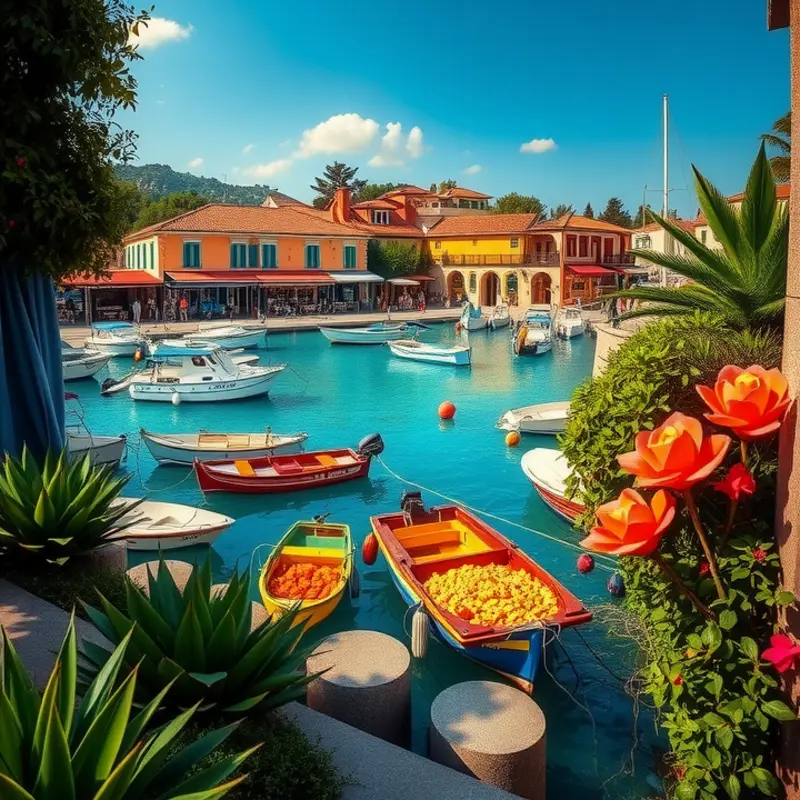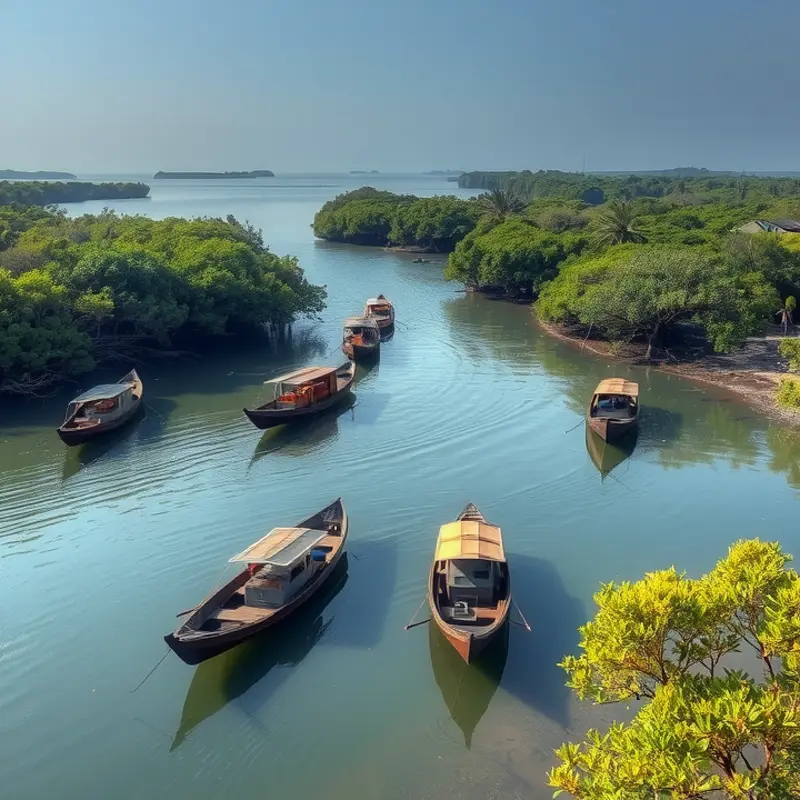Coastal fishing cuisines are rich tapestries woven from the salty seas, vibrant cultures, and age-old traditions. From the recipes passed down through generations to the fresh catches of the day, these dishes tell the story of communities living in harmony with their aquatic environments. Whether it’s the grilled sardines of Portugal, spicy fish curries of India, or the sushi traditions of Japan, each coastal region offers unique flavors and cooking techniques shaped by local resources and culinary philosophies. This journey will delve into the heart of coastal fishing cuisines worldwide, discovering their origins and significance.
The Mediterranean’s Bounty: A Taste of the Sea

Stretching from the sun-drenched Andalusian coasts to the Aegean shores, the Mediterranean region harbors one of the world’s most celebrated seafood cuisines. Each nation along this waterfront tapestry weaves its unique flavors, but all share a deep-rooted reliance on the plentiful bounty of the sea.
The Mediterranean’s culinary identity is anchored in its diverse marine life—think briny anchovies, delicate sea bream, and tender squid. In Spain, the Catalonian suquet de peix captures the essence of the sea. This fragrant fish stew, tinged with saffron and thickened by toasted almonds, is a testament to the rich fishing traditions of the region. Further east, along the Italian Riviera, the beloved ‘fritto misto’ showcases a medley of freshly caught seafood, lightly dusted and crisply fried.
In Greece, the cultural significance of seafood transcends the plate, grounding itself in millennia of tradition. From seaside tavernas in Santorini to local celebrations, seafood dishes like grilled octopus, drizzled with olive oil and sprinkled with oregano, occupy a central role. The method of preparing seafood is as revered as the dish itself. Grilling coaxes smokiness and enhanced flavors from the catch, while stewing offers a tender and flavorful result, enveloping the seafood in a harmony of tomatoes, herbs, and garlic.
The connection between culture and cuisine is further highlighted through the sustainable fishing practices deeply ingrained in Mediterranean communities. These practices, tightly interwoven with seasonal rhythms, dictate the variety of seafood that graces the tables. As summer gives way to autumn, the fish markets transform, offering a reflection of nature’s cycle—a principle that ensures future generations can partake in this same maritime harvest.
For those adventurous in the kitchen, exploring Mediterranean flavors need not be daunting. You can find practical tips for seafood preparation in this guide to speedy seafood prep, which offers insights into embracing the simplicity of Mediterranean seafood dishes. Whether it’s using fresh herbs to amplify flavors or leveraging simple techniques to maintain textures, the goal is less about complexity and more about honoring the natural essence of each ingredient.
Thus, the Mediterranean doesn’t merely present a cuisine—it offers a tradition and an enduring connection to its generous seas. Through each bite, one tastes not only the sun and salt but also a mosaic of history, culture, and environmental stewardship. This coastal expanse continues to inspire and nourish, promising a timeless culinary voyage with every dish.
Asian Delights: Fish and Spices Unite

In Asia, coastal fishing cuisines not only reflect nuanced flavors but also cultural depth. Each region, rich with its own traditions, invites enthusiasts into a world where fish and spices form an inseparable bond.
In Thailand, Thai fish cakes are a staple, combining local fish varieties with an array of spices and herbs like kaffir lime leaves, lemongrass, and galangal. These ingredients, featuring prominently in Thai cuisine, are revered for their aromatic properties. The fish cakes are often served with a sweet chili sauce, balancing flavors with a subtle kick. For the Thai, fish dishes are not just sustenance; they celebrate community gatherings and offer blessings from the sea.
Japan blends simplicity and precision, best exemplified by sushi. The artistry of sushi lies in selecting the freshest fish, often dictated by the season. Essential to this process is wasabi, a pungent yet harmonious spice, and soy sauce. Tradition holds that sushi chefs train for years to perfect their craft. Beyond gastronomy, sushi reflects the Japanese ethos of minimalism and respect for natural flavors.
India’s coastal state of Kerala offers a spicy fish curry that showcases the country’s diverse spice palette. Curry leaves, tamarind, and coconut milk fuse seamlessly with fresh fish to create a symphony of flavors. The spices, celebrated for their health benefits, are steeped in ritual significance. Fish in Kerala is more than food—it’s integral to festivals and religious celebrations, often seen as offerings to deities.
Asian fishing practices are rooted in rituals that respect the ocean’s bounty. Many communities engage in sustainable fishing, believing in the need to preserve marine life for future generations. This ethos extends to eco-smart kitchen storage practices that align with sustainability initiatives.
From the bustling markets of Bangkok to the serene coasts of Kerala, Asian coastal fishing cuisines captivate with their depth and diversity. They stand as a testament to the cultures that flourish by the sea, enriched by the global exchange of ideas and ingredients.
Final words
Coastal fishing cuisines around the world not only celebrate the bountiful offerings of the sea but also reflect the cultural identities of communities that depend on these resources. Each dish carries the stories and traditions of generations, inviting food enthusiasts to appreciate the intricate dance of flavors and techniques borne from the coastlines. As you explore these coastal cuisines, remember that each meal is a testament to the bond between people and the maritime world—a relationship nurtured over time, enriched by local ingredients and diverse cultural practices. Let these culinary traditions inspire your own kitchen adventures.








